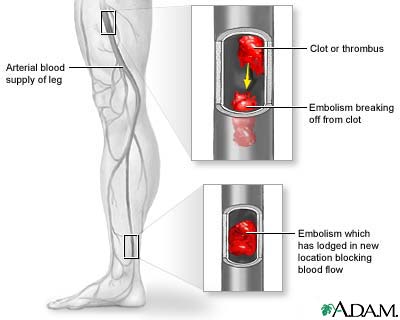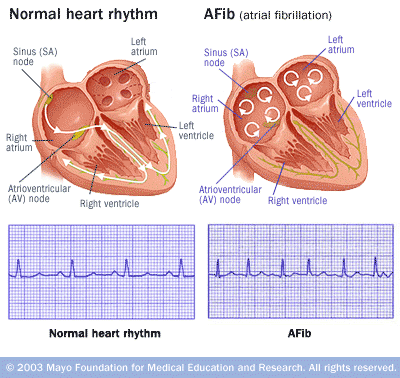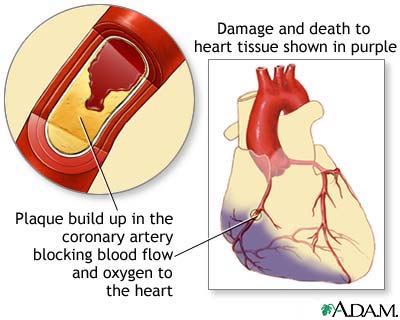Why take Warfarin?
Many people take Warfarin for to different reasons:
There are 6 Main reasons:
Deep Vein Thrombosis (DVT):
This is where a clot occurs in one of the 'deep veins', usually in the leg. The deep veins are situated deep in the muscles of the leg. Below is a picture of a person who has a DVT in their left leg. A blood clot forms in the larger veins and can cause reduced circulation in that area and therefore pain and swelling (such as shown in the picture below). A patient may be given Warfarin to stop the development of a pulmonary embolus (see below).
 |
 |
| Above is a picture show the difference between the two legs. The left leg has a DVT and therefore has reduced blood flow from the leg. This causes the swelling and redness shown above. |
This is a diagram showing what occurs in a person's vein when they have a DVT. Due to the blood clot the valves cannot operate fully and there is reduced blood flow. |
Pulmonary Embolus/Embolism (PE):
This is when a blood clot becomes stuck in the blood vessels of the lung. Usually the clot has formed in the leg and a bit breaks off and travels up in the lung.
 |
 |
| Here a blood clot has lodged in the lung. Such a blood clot could be formed in the leg (as shown in the diagram opposite) and travelled up to the lung where it is now lodged. |
|
Atrial Fibrillation:
This is where there is an irregular heartbeat that occurs in the upper chambers of the heart. Hence this means that not all of the blood that enters the chamber is pumped out. This leftover blood in the chamber is very dangerous as it can form a clot that could enter circulation. This clot can lead to a stroke because it blocks an area of blood supply to the brain. Another similar reason to Artial Fibrillation is:
Mechanical Heart Valve replacement:
Blood clots can form on the new mechanical valve which can have two effects:
- As above, the clot can be carried round the blood stream causing a stroke or other blockages.
- It can prevent the replacement valve working correctly.
Below is an animation which shows the irregular heart beat that is caused by atrial fibrillation:
(This animation uses Quicktime. If you do not have Quicktime it can be downloaded at:
www.apple.com/quicktime/download)
Shown below is the difference in an ECG when atrial fibrillation occurs:

Stroke:
If a patient has had a previous stroke they may be given Warfarin to reduce the chance of clots forming and decreasing the likelihood of another stroke. A stroke is where there is a loss of brain function due the loss of blood circulation to an area of the brain. This loss of circulation is usually caused by a clot that has formed elsewhere in the body and then travelled up to the arteries of the brain hence leading to a stroke. Some strokes are caused by clots forming in already narrowed arteries.
 |
The picture opposite show how a blood clot or an atherosclerotic clot may lead to a stroke occurring. |
Heart Attack:
This is where an area of heart muscle is permanently damaged or dies due to an insufficient supply of oxygen. This insufficient supply is usually caused by a clot blocking one of the coronary arteries (These are the main blood vessels that bring blood and hence oxygen to the heart). These clots have usually formed because of narrowing of the arteries.
 |
Here due to a clot an area of heart muscle has died as the blood flow to it has been stopped. |
After certain types of surgery:
For example
Orthopaedic
surgery where there is an increased risk of blood clots. After hip and knee replacement the risk of DVT in the leg is greatly increased.
TOP






